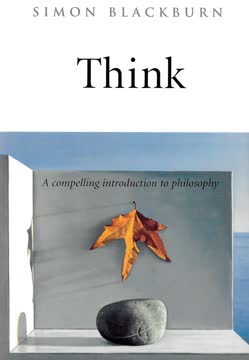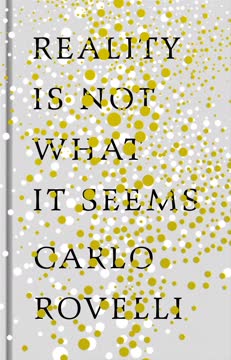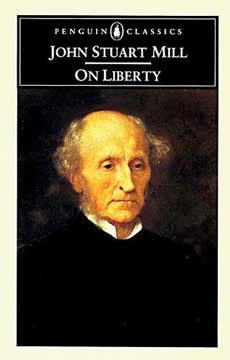Key Takeaways
1. Game theory models strategic interactions in various domains
A game is being played whenever human beings interact.
Ubiquitous applications. Game theory provides a framework for analyzing strategic decision-making in diverse fields, from economics and politics to biology and social interactions. It models situations where the outcome depends on the choices of multiple actors, each pursuing their own interests.
Key concepts. Central to game theory are:
- Players: The decision-makers in the game
- Strategies: The possible actions available to each player
- Payoffs: The rewards or consequences for each combination of strategies
- Information: What players know about the game and each other's choices
Game theoretic analysis can reveal counterintuitive insights about human behavior and social dynamics, offering a powerful tool for understanding complex interactions in the real world.
2. Nash equilibrium is the cornerstone of game theory analysis
A Nash equilibrium occurs when all the players are simultaneously making a best reply to the strategy choices of the others.
Foundational concept. Developed by John Nash, the Nash equilibrium is a situation where no player can unilaterally improve their outcome by changing their strategy, given the strategies of other players. This concept provides a way to predict stable outcomes in strategic interactions.
Applications and limitations. Nash equilibria:
- Can be pure strategies or mixed (probabilistic) strategies
- May not always exist, or there may be multiple equilibria
- Don't necessarily lead to the best outcome for all players (e.g., Prisoner's Dilemma)
- Serve as a starting point for more refined equilibrium concepts
Understanding Nash equilibria is crucial for analyzing games and predicting behavior in strategic situations, from market competition to international relations.
3. Evolutionary game theory explains behavior without assuming rationality
Even the crudest of toy games will sometimes suffice to model some animal behavior successfully.
Beyond rationality. Evolutionary game theory applies game-theoretic concepts to biological evolution and cultural change. It explains how behaviors or strategies can emerge and persist in populations without assuming individual rationality or conscious decision-making.
Key concepts:
- Replicators: Entities that can reproduce themselves (e.g., genes, behaviors)
- Fitness: The success of a strategy in reproducing itself
- Evolutionarily Stable Strategy (ESS): A strategy that, if adopted by a population, cannot be invaded by any alternative strategy
Evolutionary game theory has been successfully applied to explain various biological and social phenomena, from animal behavior to the evolution of cooperation and cultural norms.
4. Repeated games and the folk theorem illuminate cooperation
Cooperation and conflict are two sides of the same coin, neither of which can be understood properly without taking account of the other.
Mechanisms of cooperation. Repeated interactions change the dynamics of games, often allowing for cooperation even in situations where one-shot interactions would lead to conflict. The folk theorem demonstrates that a wide range of cooperative outcomes can be sustained as equilibria in infinitely repeated games.
Key insights:
- Reputation and reciprocity become important in repeated interactions
- Strategies like Tit-for-Tat can promote cooperation
- The shadow of the future influences current decisions
Understanding repeated games helps explain how cooperation can emerge and be maintained in various social, economic, and biological contexts, from international relations to the evolution of social norms.
5. Information asymmetry profoundly impacts strategic decisions
Information trumps all other considerations, but nobody knows how to extract a unique prediction from Rubinstein's bargaining model when information is incomplete.
Impact of uncertainty. Information asymmetry occurs when some players have more or better information than others. This can dramatically alter the dynamics and outcomes of games.
Key considerations:
- Signaling: How players with private information can credibly communicate it
- Screening: How uninformed players can design mechanisms to elicit information
- Adverse selection and moral hazard in economics
Information asymmetry is crucial in many real-world situations, from job markets and insurance to diplomatic negotiations and financial markets. Understanding its effects is essential for designing effective policies and institutions.
6. Mechanism design applies game theory to create optimal systems
The problem of finding a good system of regulations and incentives is called mechanism design.
Engineering incentives. Mechanism design is the art of creating game rules that align individual incentives with desired social outcomes. It's often described as "reverse game theory" – instead of analyzing given games, it designs games to achieve specific goals.
Applications:
- Auction design for spectrum allocation
- Matching markets for school choice or organ donation
- Incentive structures in organizations
- Voting systems and social choice mechanisms
Mechanism design has far-reaching implications for policy-making, institutional design, and the creation of efficient markets and social systems.
7. Bargaining theory provides insights into negotiation outcomes
Nash assumed that a rational deal will be somewhere on the frontier of the set of all possible agreements – otherwise the players would be able to find a more efficient agreement that both prefer.
Predicting agreements. Bargaining theory analyzes how parties divide a surplus through negotiation. The Nash bargaining solution and its extensions provide a framework for predicting outcomes based on players' preferences and outside options.
Key factors in bargaining:
- Patience and time preferences
- Risk attitudes
- Commitment power
- Information and beliefs about the other party
Understanding bargaining theory is crucial for analyzing and participating in negotiations, from labor disputes to international treaties.
8. Auction design demonstrates game theory's practical applications
Auctions persuade agents to tell the truth is by making them put their money where their mouths are.
Optimal mechanisms. Auction theory, a subfield of game theory, has led to significant practical applications, particularly in the design of high-stakes auctions for things like radio spectrum licenses.
Key auction formats:
- English (ascending bid)
- Dutch (descending bid)
- First-price sealed-bid
- Second-price sealed-bid (Vickrey)
Understanding the strategic implications of different auction formats has allowed governments and organizations to design mechanisms that maximize revenue, efficiency, or other objectives.
9. Coalitions and cooperative game theory explore group dynamics
Von Neumann and Morgenstern understood that Bob would be unwise to listen to Carol in Odd-Man-Out when she explains that he can get 51 cents by joining a coalition with her rather the 50 cents that Alice has promised him.
Group formation. Cooperative game theory examines how players form coalitions and divide the resulting benefits. It provides insights into political alliances, business partnerships, and other multi-party interactions.
Key concepts:
- Core: Set of allocations that no coalition can improve upon
- Shapley value: A method for fair division of coalition benefits
- Stable sets: Collections of outcomes resistant to deviations
Understanding coalition dynamics is crucial for analyzing complex multi-party interactions in politics, business, and social settings.
10. Game theory offers powerful insights across diverse fields
Game theory offers some insight into the nuts and bolts of such self-policing understandings. How do they work? Why do they survive? How much cooperation can they support?
Interdisciplinary tool. Game theory provides a unifying framework for understanding strategic interactions across various domains, from economics and political science to biology and computer science.
Applications:
- Economics: Market competition, industrial organization
- Political science: Voting systems, international relations
- Biology: Evolution of cooperation, animal behavior
- Computer science: Algorithmic game theory, multi-agent systems
- Social sciences: Social norms, cultural evolution
By offering a rigorous approach to analyzing strategic interactions, game theory continues to yield valuable insights and practical applications across a wide range of disciplines.
Last updated:
FAQ
What's "Game Theory: A Very Short Introduction" by Ken Binmore about?
- Overview of Game Theory: The book provides a concise introduction to game theory, explaining its principles and applications in various fields such as economics, politics, and biology.
- Real-life Applications: It illustrates how game theory can be applied to real-life situations, from driving in traffic to international diplomacy.
- Rational Decision-Making: The book emphasizes the importance of rational decision-making in games and how game theory can predict outcomes when players act rationally.
- Interdisciplinary Approach: Binmore integrates concepts from economics, mathematics, and psychology to provide a comprehensive understanding of game theory.
Why should I read "Game Theory: A Very Short Introduction" by Ken Binmore?
- Comprehensive Introduction: It offers a thorough yet accessible introduction to game theory, making it suitable for beginners and those with some prior knowledge.
- Practical Insights: The book provides practical insights into how game theory can be used to solve real-world problems and make strategic decisions.
- Engaging Examples: Binmore uses engaging examples and anecdotes to illustrate complex concepts, making the material more relatable and easier to understand.
- Broad Applications: Understanding game theory can enhance decision-making skills in various fields, including business, politics, and social sciences.
What are the key takeaways of "Game Theory: A Very Short Introduction" by Ken Binmore?
- Rationality in Games: Game theory assumes that players act rationally to maximize their payoffs, which is crucial for predicting outcomes.
- Nash Equilibrium: A central concept in game theory, where players choose strategies that are best responses to each other, leading to a stable outcome.
- Evolutionary Game Theory: The book explores how game theory applies to evolutionary biology, explaining how strategies evolve over time.
- Real-world Applications: Game theory is not just theoretical; it has practical applications in auctions, negotiations, and even evolutionary biology.
How does Ken Binmore explain Nash Equilibrium in "Game Theory: A Very Short Introduction"?
- Definition: Nash Equilibrium occurs when all players in a game are making the best possible decisions given the decisions of others, resulting in no incentive to deviate.
- Examples: Binmore uses examples like the Prisoner's Dilemma and the Battle of the Sexes to illustrate how Nash Equilibrium works in different scenarios.
- Rational Interpretation: The book explains that Nash Equilibrium can be reached through rational reasoning or evolutionary processes.
- Significance: Understanding Nash Equilibrium is crucial for predicting the outcomes of strategic interactions in various fields.
What is the Prisoner's Dilemma, and why is it important in "Game Theory: A Very Short Introduction"?
- Scenario Description: The Prisoner's Dilemma is a classic example in game theory where two individuals must decide whether to cooperate or defect, with the outcome depending on their combined choices.
- Rational Outcome: Despite mutual cooperation being beneficial, rational players often end up defecting, leading to a suboptimal outcome.
- Paradox of Rationality: The dilemma highlights the challenges of achieving cooperation in situations where individual incentives lead to conflict.
- Broader Implications: It serves as a foundation for understanding more complex strategic interactions and the importance of trust and communication.
How does "Game Theory: A Very Short Introduction" apply game theory to real-world scenarios?
- Traffic and Auctions: The book discusses how game theory can be applied to everyday situations like driving in traffic and participating in auctions.
- Political and Economic Games: It explores how politicians and businesses use game theory to strategize and make decisions.
- Biological Applications: Binmore explains how game theory models evolutionary processes and animal behavior.
- Strategic Decision-Making: The book emphasizes the role of game theory in improving decision-making in various fields.
What is the significance of evolutionary game theory in "Game Theory: A Very Short Introduction"?
- Biological Evolution: Evolutionary game theory models how strategies evolve over time in biological populations, explaining behaviors like altruism and cooperation.
- Replicator Dynamics: The book introduces replicator dynamics, a mathematical model that describes how the frequency of strategies changes over time.
- Stability and Equilibrium: Evolutionarily stable strategies (ESS) are discussed as strategies that persist in a population despite mutations.
- Interdisciplinary Impact: The application of game theory to biology demonstrates its versatility and relevance across disciplines.
How does Ken Binmore address the concept of utility in "Game Theory: A Very Short Introduction"?
- Utility Definition: Utility is a measure of preference or satisfaction that players aim to maximize in a game.
- Beyond Money: Binmore explains that utility is not limited to monetary gains but includes other factors like happiness and well-being.
- Revealed Preference: The book discusses how economists use revealed preference theory to infer utility from observed choices.
- Risk and Utility: It explores how players' attitudes toward risk affect their utility and decision-making in games.
What are some of the best quotes from "Game Theory: A Very Short Introduction" and what do they mean?
- "A game is being played whenever human beings interact." This quote emphasizes the ubiquity of strategic interactions in everyday life.
- "Game theory isn’t able to solve all of the world’s problems, because it only works when people play games rationally." It highlights the limitations of game theory in predicting outcomes when players act irrationally.
- "Cooperation and conflict are two sides of the same coin." This quote underscores the dual nature of human interactions, where both cooperation and conflict can coexist.
- "The folk theorem says that we don’t need an external enforcement agency to cooperate successfully." It suggests that cooperation can emerge naturally in repeated interactions without external enforcement.
How does "Game Theory: A Very Short Introduction" explain the role of information in games?
- Perfect vs. Imperfect Information: The book distinguishes between games with perfect information, where all players know the history of moves, and those with imperfect information.
- Information Sets: Binmore introduces the concept of information sets to represent what players know at different points in a game.
- Signaling and Screening: The book discusses how players use signals to convey information and how others screen these signals to make decisions.
- Impact on Strategy: Information asymmetry can significantly affect players' strategies and the overall outcome of a game.
What is the role of conventions in "Game Theory: A Very Short Introduction"?
- Coordination Games: Conventions help players coordinate their actions in games where multiple equilibria exist, like the Driving Game.
- Focal Points: The book explains how focal points, or salient solutions, help players converge on a particular equilibrium.
- Cultural Evolution: Conventions often arise from cultural evolution, where successful strategies become norms over time.
- Efficiency and Inefficiency: While conventions can lead to efficient outcomes, they can also perpetuate inefficient equilibria if not properly challenged.
How does "Game Theory: A Very Short Introduction" address the concept of reciprocity?
- Reciprocal Altruism: The book explores how reciprocity can sustain cooperation in repeated games, even among self-interested players.
- Punishment and Reward: Reciprocity often involves punishing defectors and rewarding cooperators to maintain cooperation.
- Folk Theorem: The folk theorem shows that a wide range of cooperative outcomes can be sustained in repeated games through reciprocal strategies.
- Role in Human Society: Reciprocity is a fundamental aspect of human social interactions, facilitating cooperation and trust.
Review Summary
Game Theory: A Very Short Introduction receives mixed reviews. Many find it overly complex and technical for an introductory text, with difficult mathematical concepts and unexplained terminology. Some praise its coverage of topics like auctions and evolutionary biology. However, others criticize the writing style as defensive and patronizing. The book's approach to game theory applications in various fields intrigues some readers, while others feel it lacks sufficient explanation and accessibility for beginners. Overall, opinions are divided on its effectiveness as an introduction to game theory.
Very Short Introductions Series Series

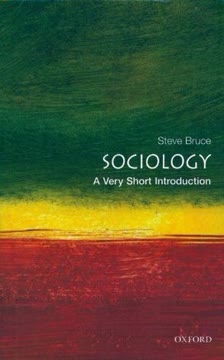

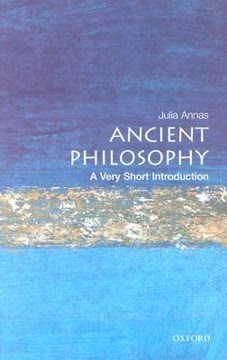



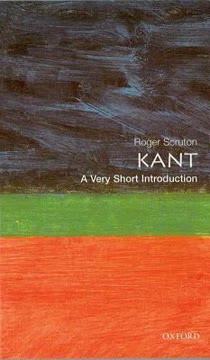
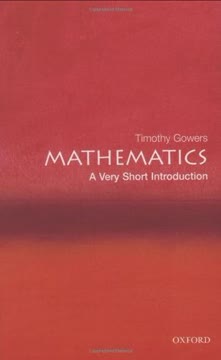
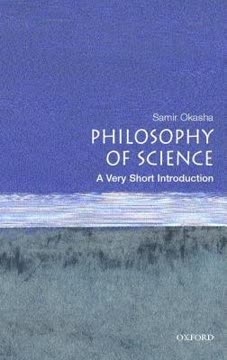
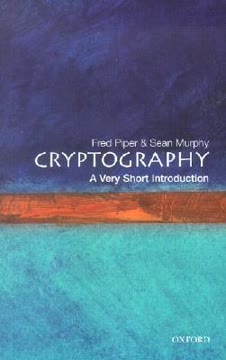
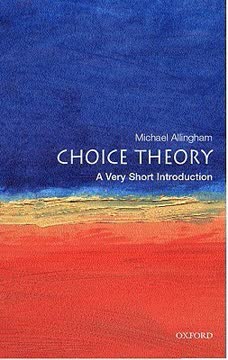
Similar Books
Download PDF
Download EPUB
.epub digital book format is ideal for reading ebooks on phones, tablets, and e-readers.

